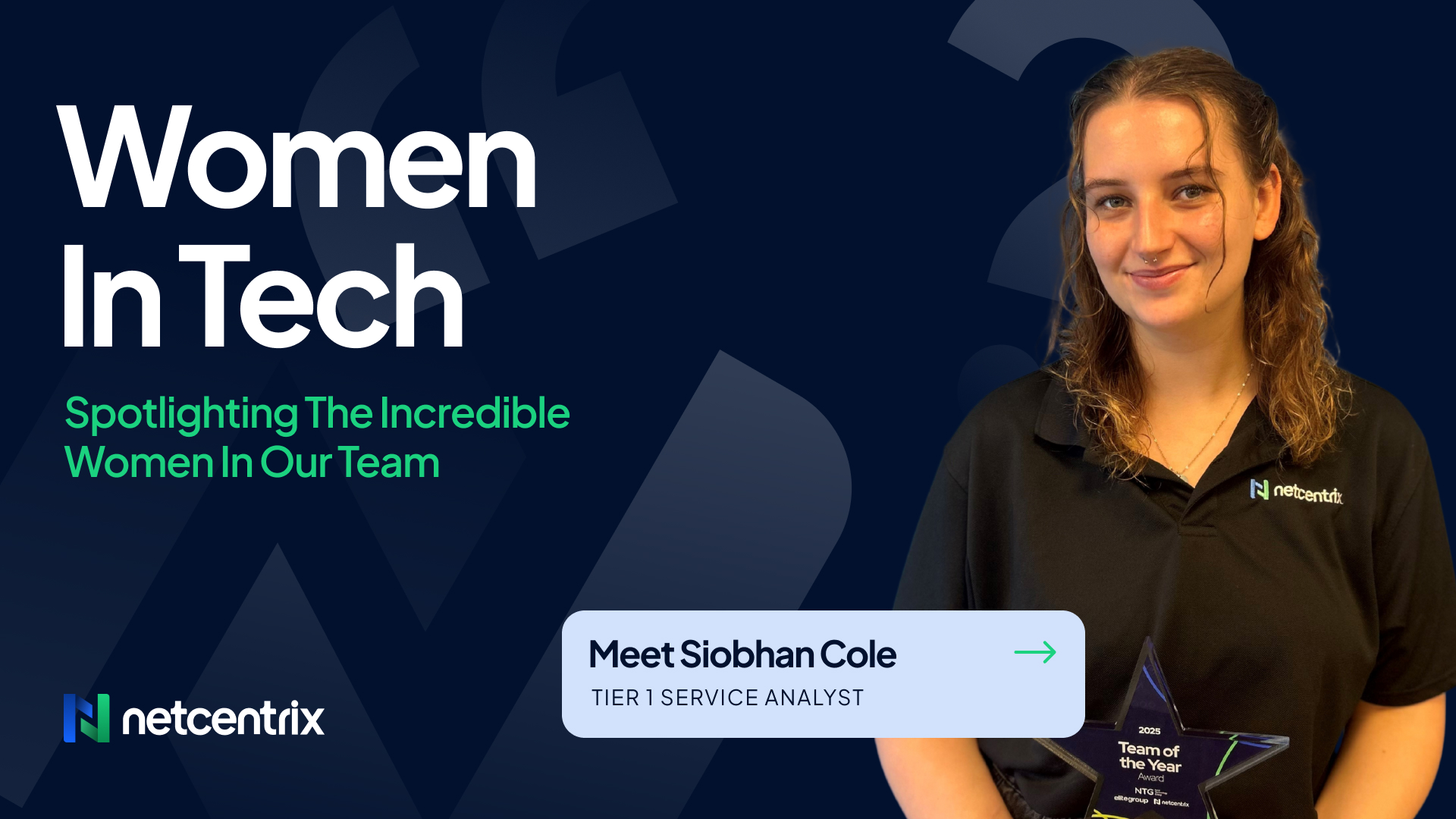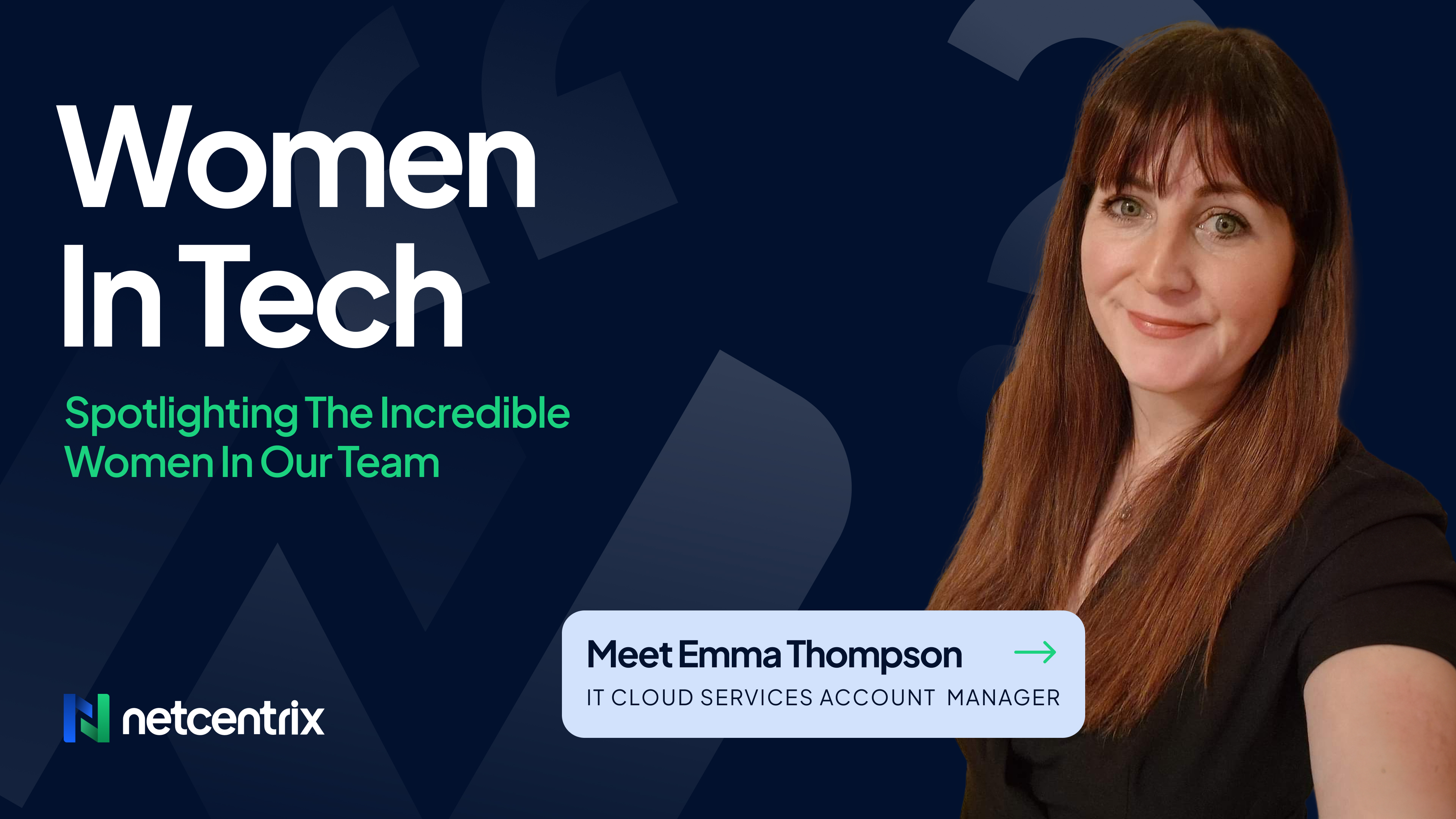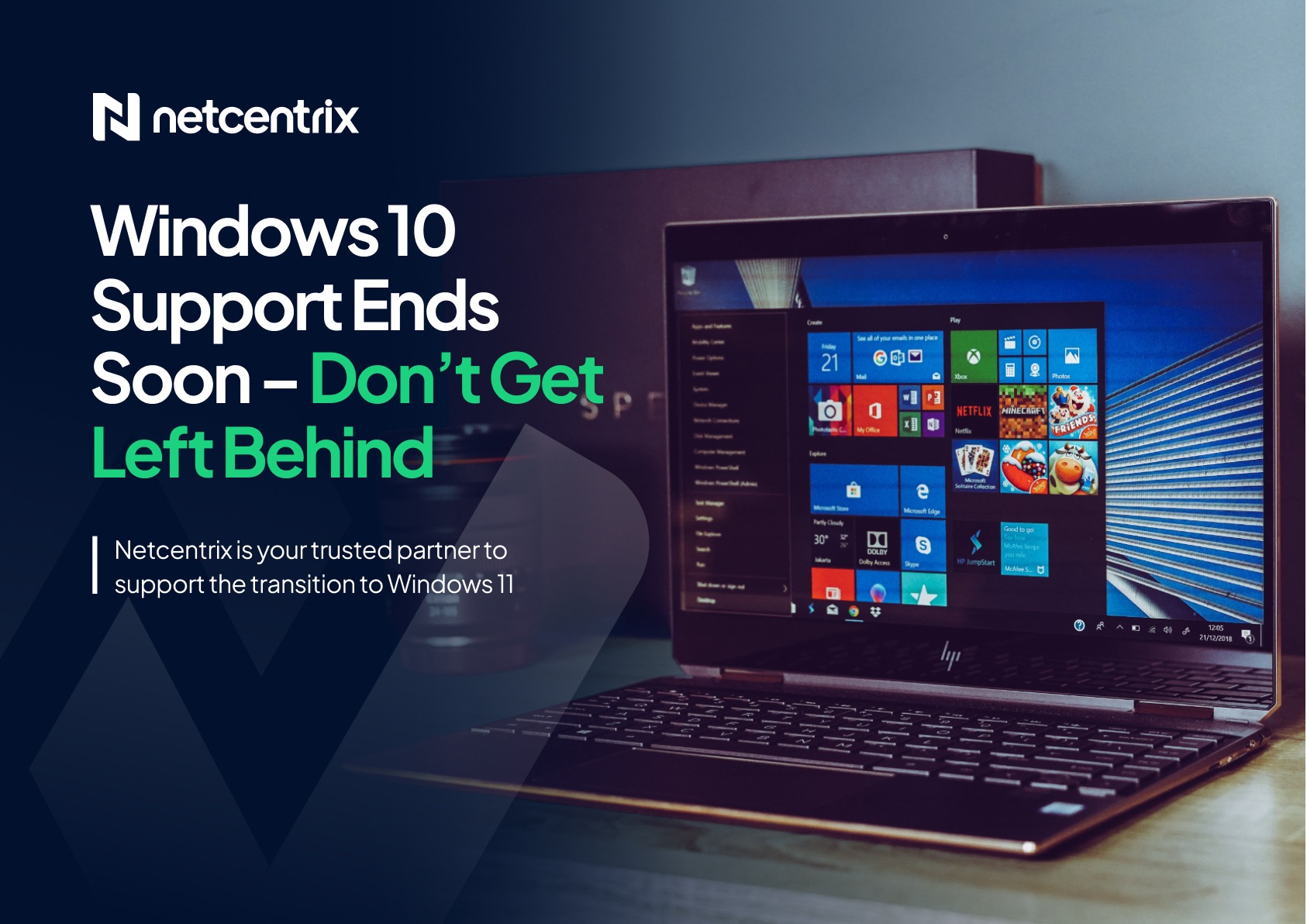The cloud is a wonderland of possibilities for business operations.
However, when it comes to security, there are many risks of cloud computing that can cause severe consequences if they’re not taken care of.
Cloud technology has provided many key benefits to businesses, all over the world, helping them to digitalise their operations, improve customer experience and also provide better working environments that meet the needs of the multi-generational workforce. However, like all complex technology, there are risks when it comes to using cloud computing and keeping your data safe. From cyber-criminals gaining access to your information and holding it to ransom, to an accidental human error that leads to a loss of data, there are many threats to cloud security that can have a drastic impact on your business.
It is a fact that cyber-criminal activity is becoming more sophisticated, therefore it is more important than ever to know how to protect any and all data within your business, including within your cloud computing infrastructure. However, we understand it can seem daunting and knowing where to start your cloud security education can be difficult. That’s why we have compiled 6 key security risks of cloud computing and an explanation of how you can safeguard your business and its data from these risks. So, without further delay, class is in session – let’s learn about cloud security risks and how to avoid them!
Risks and Benefits of Cloud Computing – The Stats
Out of a survey of 2000 businesses, 85% believed that cloud technology is critical to innovation. However, within the same study, of the 85% of businesses who believe cloud computing is vital, only 40% have a cloud security policy in place. That is a huge statistic that demonstrates a general lack of knowledge when it comes to cloud security risks. You may be thinking, why is this such a big issue – doesn’t cloud technology improve security? Well, yes, cloud technology can improve security due to measures that are included in many cloud applications – however, think about the amount of information that is stored within a single cloud application. Now think of a cloud infrastructure, made up of many applications, hardware, software, platforms and documents. That is a lot of potential pathways that hackers and cyber-criminals can use to infiltrate your network and also a lot of endpoints that need to be monitored to avoid security issues and loss or theft of data.
The threat of attack is frighteningly real, with external attacks on cloud services seeing a 600% rise in 2020. Therefore it is no surprise that the cloud security market is currently estimated to be worth $34.8 billion and is expected to grow to $67.6 billion by 2026 due to our increasing demand for cloud-based services and the rising number of cyberattacks as businesses continue to ‘go digital’. The market for cloud-based products and services is only going to grow and we already know that the techniques of cyber-criminals are also becoming more technologically advanced, therefore the need for cloud security measures and solutions is also going to grow. The key point to take away from these statistics is that, although cloud computing is going to become more and more vital within business, it is also going to pose more risks to a business’s information. It is not enough to simply invest in cloud security solutions, with little or no knowledge of what your business actually needs in order to protect its data in the cloud. Having a clear idea on the potential risks is so important before taking the plunge into cloud computing.
Endpoint Security
Endpoint security is an incredibly important component to any business’s cyber-security initiatives. It makes sense to know what exactly an endpoint is, before we learn how to secure it. An endpoint is a point of access to a network. Basically end-user devices, such as PCs, laptops and mobile devices that are connected to your business’s network are all endpoints, as they allow access to the network. If we think of your cloud network as a house and its data as the contents of the house, an endpoint (such as a laptop) is the door into the house. Now, obviously, for those who need access to the house (network), a door (device) is very useful, it would be very difficult to access your contents (data) otherwise wouldn’t it! Do you know who else can get in through a door? A thief.
When we’re talking about endpoint security, we’re not just talking about one endpoint that is a doorway into your network. Oh no – think about your own business network now. How many laptops, tablets, PCs and other devices within your premises are hooked up to it. If you operate remote or hybrid working, how more endpoints does this now add into the mix. Now let’s think about these endpoints as doors again – how many doors to your network do you have in total?
Probably a lot right? All of these endpoints need to be properly secured, monitored and managed in order to avoid intruders infiltrating your network, wreaking havoc and stealing your data. This is where effective endpoint security is vital.
With businesses utilising so many devices and also now implementing remote and hybrid working, this is a lot of potential entry-ways for hackers and cyber-criminals, but how can you manage so many endpoints effectively. Well think of it like this. In some buildings you have security guards employed to protect the premises and ensure nobody who isn’t authorised to enter manages to sneak in. This can be effective if you can find a security guard that can stand on sentry duty for 24 hours a day, seven days a week without moving – this probably won’t be possible and therefore not an effective solution. This is the same with manual endpoint security. You’re relying on your physical IT resource to monitor your endpoints and prevent a breach. Not only is this time consuming for your team, it isn’t as effective compared to autonomous endpoint security measures.
Investing in endpoint management and security measures that possess automated detection, prevention, containment and response features is critical to your endpoint security success. If manual endpoint security is a security guard, autonomous security measures are burglar alarms. Firstly, they can act as a preventative measure due to them making a cyber-criminal’s job more difficult and therefore they’re more likely to leave and go on the hunt for an easier target with less protection. Secondly, it doesn’t require human intervention unless there is a threat that its response features cannot solve or it cannot contain the threat. Which means your IT team has more capacity for other requirements. With endpoint management and security solutions deployed effectively, you can be protected against common cyber-security threats that can pose a risk to data stored in the cloud, such as malware, ransomware and phishing, without overworking your team and with more accurate results.
Data Breaches
Utilising secure cloud storage, means you can take your records off-premises and access them from anywhere securely – when cloud security is managed efficiently. However, when this goes wrong and a criminal manages to gain access to this storage, that is when a business can find itself in dire straits. Again, this is where utilising automated measures are incredibly beneficial for effective data security, as they basically act as an ‘all-seeing eye’ to prevent a cyber-attack.
The first major step you should take to ensure you and your team protect your business data is outlining the data you use and store within the cloud. After all, how can you protect something you don’t know much about? Start by identifying the different types of data you hold, its sensitivity and the impact or consequences that could occur should this information be lost or stolen. The next step you can take is to highlight a hierarchy of authority which deems who can have access to certain information. The less people who have access, the less chance you have of information being lost, stolen or hacked into. Access can be granted on a ‘need-to-know’ basis and will therefore its safety will be the responsibility of those granted this access.
How can you stop other people from accessing this information and what if the device one by an authorised person is lost or stolen, couldn’t anybody gain access then? If you have the right tools in place, no! Data encryption is a really important security factor for cloud computing. It means that you have total control over who can view/use your data and if an unauthorised person tries to access this data or steal it from your company, they will not be able to see it. Another important security feature for cloud computing is multi-factor authentication, which adds an extra layer of protection when trying to access cloud applications, platforms and data.
Away from the technological side of things, one of the most important protective measures you can take for cloud security is implementing effective training to everyone in your team. We say this all the time in our advice pieces, but training is absolutely paramount to ensure your team can take advantage of technological solutions and keep data secure. Cloud security training should be comprehensive and cover every aspect of cloud computing that is relevant to your business and its teams. Key components of your training should always include, safe data management, password creation, maintenance and control, education on the cloud solutions you use and specialist training for the prioritised list of those who have access to incredibly sensitive information.
Lack of Knowledge
Essentially, when it comes to utilising cloud technology, taking full advantage of its features and keeping your data secure, the more you know the better. Many businesses make the move to the cloud without having a sound understanding of its architecture, how it works and the risks involved, which can lead to them becoming vulnerable to threats. By reading this article, you’re on the right path, as you’re clearly wanting to get a better idea of cloud security, so well done for that! However, if you are looking to move your business to the cloud it is of paramount importance that you are clear of the process and the steps you need to take to make the move securely. The move to the cloud is not a ‘lift and shift’ process, there is a lot to transfer! Bringing in specialist help, such as Netcentrix, who are experts in cloud technology and provide a wide range of cloud services, will help you to make the move easily and securely. It will also give you the opportunity to work with cloud specialists who will be able to take the time to explain how your cloud solutions work and the steps you need to take to keep your information secure.
Open Source Software
Open Source Software, is software with a source code that can be inspected, modified and enhanced by anyone. The source code with Open Source Software is the code that controls how a programme or application works. By changing the code, a programmer can improve or change the programme to make it suit their needs more effectively, to change features of the programme and to fix parts that don’t work properly. Open Source Software can be really useful for cloud computing, as they don’t limit you to a single cloud provider or their environment as they are ‘platform-neutral’. This allows you to integrate existing infrastructures and make cloud programmes and applications your own, through customising the source code.
However, due to the nature of Open Source Software, they do pose significant risks to cloud security. Many Open Source programmes and technologies don’t have security auditing procedures in place which means that they aren’t initially or continually checked for security concerns and issues. Furthermore, like all programmes and apps, they will need regular updates in order to avoid bugs, vulnerabilities and malfunctions, which can take a lot of monitoring when you are implementing lots of different Open Source Software.
Due to the collaborative nature of Open Source Software, it is usually attached to a community made up of the creators of the software and its users. This community is often used to report issues with the software, bugs that need fixing and any notifications of updates from the creator. This means that these vulnerabilities are now public knowledge, which means a cyber-criminal could find out. The cyber-criminal can then use this knowledge to exploit the vulnerability and launch an attack on those who are using the vulnerable Open Source Software. Once again, this is where automation helps. Through deploying automated security solutions, your software is constantly being evaluated and analysed for weaknesses and vulnerabilities, so they don’t go unnoticed – especially useful for businesses who use lots of different Open Source Software. Including a section within your cloud security policy that outlines the type of acceptable Open Source Software that can be used within your business, such as software that is regularly audited by its creator for security issues. This will avoid the use of risky software that could pose a risk to your data security.
Poor Access Management
Cloud security threats and many common cyber-security threats in general, can often be caused by identity and access management issues. From not keeping a record of who has access to what data and applications to staff leaving the business whilst still possessing security credentials for sensitive information – this lack of control due to poor management can cause severe consequences. We’ve already talked about the importance of utilising passwords and multifactor authentication in order to add layers of protection to your data stored in the cloud. However, managing the passwords your team possesses and which security credentials they are authorised to use is absolutely paramount to ensure you are in complete control over who accesses your business data.
A key step to improving your access management process is to assign roles and responsibility for data access and prioritise the members of your team who have authorised access to your data. Remember that record of data we told you to create in the first step. This is where that is really going to come in useful. You can use this record to assign your roles, so you are clear on who has access and who doesn’t. Ensure all staff, especially those with authorised access to sensitive information are aware of good password hygiene, i.e. never sharing passwords or writing them down. Implementing a password database software that automatically saves passwords, within a password and multifactor authentication protected device, is really useful to prevent staff feeling the need to keep a physical record of passwords.
Misconfigurations of Cloud Hardware or Software
The sheer amount of applications, components, infrastructure and features that can be deployed to the cloud can cause a logistical nightmare when it comes to configuration management. Trying to keep an eye on the safety of all of your cloud deployments can feel like spinning lots of different plates whilst blindfolded. On average, enterprise organisations have 14 misconfigured IaaS/PaaS instances running at one time. This may not sound like a massive number, but this can result in around 2269 individual misconfiguration incidents a month. To put this into perspective, cloud misconfigurations have cost businesses almost $5 trillion and has led to the accidental release of 33 billion user records. Quite frightening statistics when you think about it and it can literally take the misconfiguration of one element or component to open a severe vulnerability.
Now we’ve freaked you out with that horror story, let’s calm things down and tell you how you can avoid this issue. Firstly, ensure that you are familiar with the security controls and default configuration of each cloud component within your system. Performing regular audits and configuration review will help you to highlight any insecurities or misconfigurations that could cause a security issue. Finally – you are probably sick of us mentioning this by now – AUTOMATION IS KEY! Utilise cloud technology that includes automated security features, such as Microsoft Azure. Let these features spin the plates for you and find the misconfigured resources and help you to fix them before they become a problem!
Keep Calm and Trust Netcentrix With Your Cloud Security
At Netcentrix, we know how the amazing benefits of moving to the cloud can help your business to progress and improve, that’s why we’re passionate about helping businesses to embrace this technology. We also know that trying to protect yourself from the risks posed by cloud computing can be difficult and it can be hard to know where to begin. That’s why we are here to take the pressure off you, so you are free to enjoy the benefits of the cloud. Our expert team are not just capable of sourcing the best cloud solutions for your business needs, but they are also here to support you when it comes to your cloud security. From being on-hand to provide advice and guide you through the best processes for keeping your information safe, to being right by your side to fix security issues within your cloud infrastructure – we are here for you. So, if you’re ready to make the move to the cloud, trust the experts to get you there securely!

















